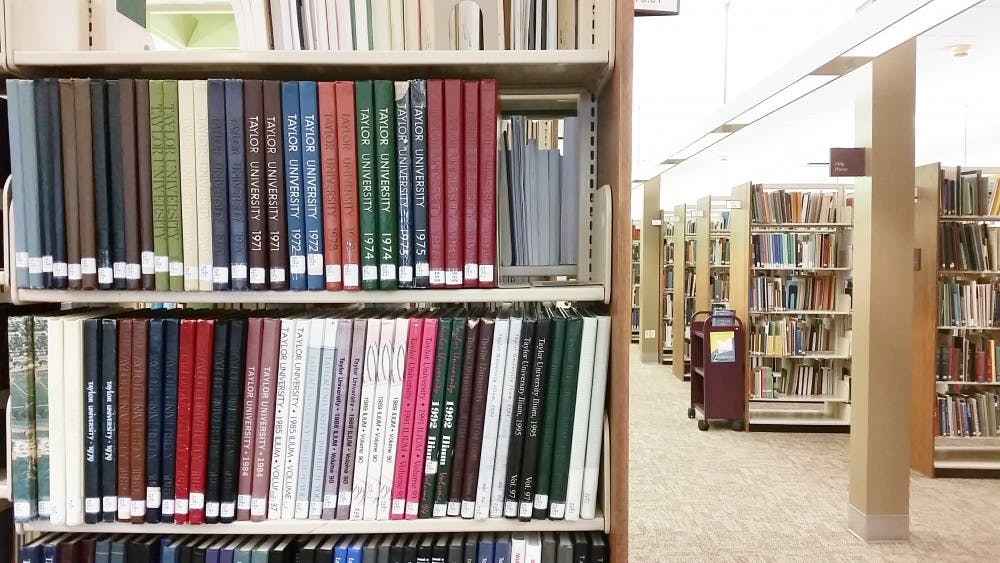By Donna Downs | Faculty Contributor
Since 1898, the "Ilium" (previously known as the "Gem") has been recording the history of Taylor University. During World War I, "annuals" were published alternate years between 1901 and 1919, but after World War I, the student yearbook became a yearly publication, according to "Taylor University, the First 25 Years."
Over the past couple of decades during the onslaught of social media and instant camera access, the value of yearbooks has become questionable for many universities as they experience budget cuts and reduced sales. "The Baltimore Sun" last year reported that, for the first time in decades, Johns Hopkins University would not print a yearbook because students are documenting their experiences on social media and simply don't want to pay for the book.
It is true that students don't appear to value yearbooks like they once did. Our photographer's records show that last year only 270 underclassmen showed up to have their portraits taken, consistently dwindling from 594 four years earlier. Today I received an email from a student who wishes to get reimbursed for his "free" yearbook because he doesn't want it and doesn't think it should be covered in his tuition.
Perhaps it would help him and others to understand the impact of a yearbook and its true value for an institution.
Each year a staff of writers, photographers and designers work diligently and engage in an invaluable academic endeavor as they work together to produce a more than 200-page book. When I advised the yearbook in the mid '90s and again in the mid 2000s, two of my editors-in-chief said holding that position was their greatest learning experience during their time at Taylor. Students learn how to lead, work as a team, design, meet deadlines, take photographs and, basically, run a small publishing company.
Not only do students have an excellent academic experience, but they offer the university insight into what is important to students and record history for the next generation.
When our van accident on April 26, 2006, occurred, I was the first to be called because media wanted our most recent pictures of the students killed in the accident. Those photos were displayed on the front pages of papers and websites around the world. Of course, low resolution pictures these days can be captured from social media, but in many crisis situations, family members might not want those photos to be used, or they may not be good enough for print. Our photographer graciously and diligently worked with us to access his professional portraits to honor the lost lives.
When William Ringenberg wrote the 125- and 150-year history books of our university, he consistently referenced both the "Ilium" and The Echo as credible sources of information. Students who record history in both of these publications offer an irreplaceable service to the university. Although social media runs rampant, the campus yearbook and newspaper are a yearly storehouse of those traditions, people and activities our university holds sacred in any given year. No other place offers a mosaic of each year like the "Ilium" does.
Yearbooks also serve as a public relations piece for a university, especially if they're done well. It's not unusual for yearbooks to be laying on end tables near the president's office or in a lobby where prospective students regularly visit. As in Taylor's case, the yearbook has won numerous awards, giving the previous adviser, Mike Saunier, bragging rights and showing the quality of work our students do. We've been recognized at state and national conferences as doing exceptional work, quite the résumé builder for the editors of those books.
If students, faculty and staff will show enough interest in the yearbook to have their portraits taken, we would represent our school more accurately. I was dismayed to open last year's book and see that only 18 students from Bergwall, 11 from Swallow, 27 from Wengatz and three from Breuninger had their portraits taken. Other hall numbers were slightly higher. Only 32 faculty were represented on faculty pages.
How do we reimburse someone for the cost of a yearbook? When we consider the learning experience, the historical representation and the public relations aspects, we likely couldn't begin to afford to reimburse its true value.
Take a walk in the archives and look at Taylor's past through the lens of student media.
I challenge us as a community to show up for pictures and be thoughtful of our photographer, understanding taking and selling professional portraits is how he makes his living. His time here does not cost the university, and, like any other professional, he deserves respect.
Let's serve our university well as we help tell today's stories for tomorrow's generation.




